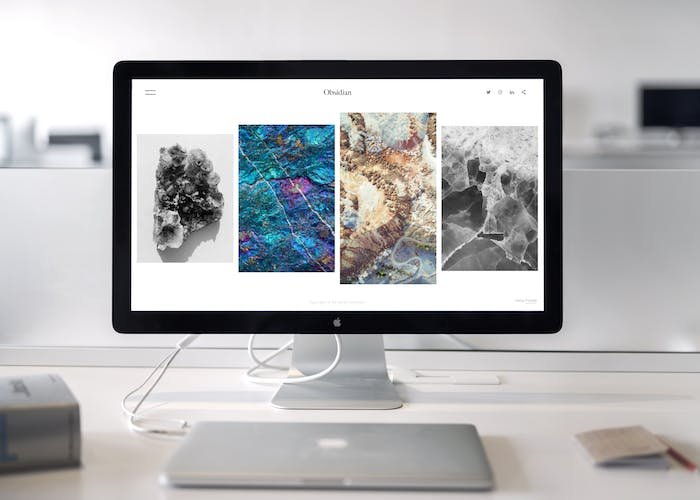
What Does a UX Designer Do?
Understanding UX Design
User Experience (UX) Design is a fundamental aspect of the digital world that revolves around the interaction between users and digital products. It’s not just about aesthetics; it’s about creating a seamless, enjoyable, and efficient experience for users. In this article, we will delve into the intricacies of UX design, defining its key components, and shedding light on the distinctions between UX and User Interface (UI) design.
Defining UI Design
Before diving into UX, it’s essential to understand its counterpart – UI design. User Interface design focuses on the visual elements of a digital product. It deals with the aesthetics, the layout, and the overall look and feel. In contrast, UX design focuses on the overall user experience, encompassing usability, accessibility, and the journey users take while interacting with a product.
Key Distinctions: UX vs. UI Design
Appearance vs. Interaction
One of the primary distinctions between UX and UI design is the focus. UX design revolves around the interaction between the user and the product, ensuring it’s smooth and intuitive. UI design, on the other hand, concentrates on the appearance, making sure that the product is visually appealing and cohesive.
Conceptualization vs. Execution
UX design involves conceptualizing the entire user journey, from the moment a user first encounters the product to their final interaction. It’s about creating wireframes, prototypes, and conducting user testing to ensure a seamless experience. UI design, in contrast, is more about executing the visual aspects based on the UX plan.
The Big Picture vs. Nitty-Gritty
While UX designers focus on the big picture, ensuring that every element of the product aligns with the user’s goals and expectations, UI designers get into the nitty-gritty details of design, selecting colors, fonts, and creating pixel-perfect layouts.

The Synergy of UX and UI Design
It’s crucial to understand that UX and UI design are not in opposition but rather work in harmony to create a successful digital product. They complement each other, with UX providing the roadmap and UI ensuring that the journey is visually appealing.
Roles and Responsibilities: UX Designer
Understanding User Behavior
One of the core responsibilities of a UX designer is to gain a deep understanding of how users interact with digital products. This involves studying user behavior, preferences, and pain points. Through methods like user research, surveys, and user interviews, UX designers collect valuable insights that shape the design process.
Creating User Personas
User personas are fictional representations of different user groups, each with distinct characteristics and goals. UX designers create these personas based on the data collected during user research. Personas help designers empathize with users, enabling them to make design decisions that cater to specific user needs.
Developing User Journeys
User journeys map out the entire experience a user has with a digital product, from their initial interaction to the completion of tasks or goals. UX designers create these journey maps to visualize the user’s experience, identify pain points, and optimize the overall interaction. The goal is to ensure that every step in the user’s journey is well thought out and user-friendly.
Ensuring Intuitive Interactions
One of the primary objectives of a UX designer is to create interactions within the product that are intuitive. This involves designing user interfaces with clear navigation, logical flow, and easy-to-understand call-to-action elements. The aim is to minimize any cognitive load or confusion, ensuring users can achieve their goals seamlessly.
User-Centered Design
A fundamental principle of UX design is to keep the user at the center of the design process. UX designers advocate for the user’s perspective in decision-making, continually seeking feedback through usability testing and user feedback. This approach ensures that the final product aligns with user expectations and needs.
Accessibility and Inclusivity
UX designers also play a critical role in ensuring that digital products are accessible to all users, regardless of their abilities or disabilities. They adhere to accessibility guidelines and standards to make the product usable by individuals with various impairments. This commitment to inclusivity promotes a more equitable user experience.
The Importance of Content Strategy
Information Architecture
Content strategy involves structuring and organizing information in a logical and user-friendly manner. UX designers work on defining the information hierarchy, ensuring users can easily find what they’re looking for. A well-structured content strategy enhances overall usability.
Contextual Relevance
Content should not only be informative but also contextually relevant. UX designers ensure that content is presented in the right context, providing users with the information they need when they need it. This contextual relevance reduces user frustration and improves engagement.
Visual Elements
Content strategy also encompasses decisions related to visual elements, such as images, videos, and graphics. UX designers consider the visual appeal and impact of these elements on the user experience. Visual content should align with the product’s design and brand identity, creating a cohesive and engaging user interface.
Consistency and Tone
Maintaining consistency in content tone and style is essential for a seamless user experience. UX designers collaborate with content creators to establish a unified voice that resonates with the target audience. Consistency in content helps build trust and familiarity with users.
Mobile Responsiveness
Given the prevalence of mobile devices, UX designers ensure that content is responsive and optimized for various screen sizes and devices. This ensures that users have a consistent and enjoyable experience regardless of the device they use.
Explore UX/UI Bootcamps
For individuals aspiring to embark on a career in UX (User Experience) or UI (User Interface) design, there are several educational paths to consider. One option is to enroll in UX/UI bootcamps, which offer intensive and focused training in these disciplines. Let’s explore the benefits of bootcamps and how they can help you kickstart your career in UX and UI design
Comprehensive Training
UX/UI bootcamps are designed to provide a well-rounded education in user experience and user interface design. These programs cover a wide range of topics, including user research, wireframing, prototyping, usability testing, and visual design. By the end of a bootcamp, participants gain a solid understanding of the entire design process.
Practical Skills
Bootcamps often emphasize hands-on learning and practical skills development. Participants work on real-world projects, enabling them to apply the concepts they’ve learned in a practical context. This experiential learning approach equips students with the skills they need to tackle design challenges in the field.
Short Duration
One of the advantages of bootcamps is their relatively short duration compared to traditional degree programs. Most bootcamps last between 8 to 24 weeks, allowing students to acquire essential skills and start their careers more quickly. This makes bootcamps an attractive option for those looking to transition into the field promptly.
Industry-Relevant Curriculum
Bootcamps typically collaborate with industry professionals and experts to ensure that their curriculum reflects current industry trends and best practices. This means students receive up-to-date training that aligns with the demands of the job market, giving them a competitive edge when seeking employment.
Networking Opportunities
Bootcamps often foster a sense of community among participants. Students have the opportunity to collaborate on projects, share insights, and build a network of like-minded professionals. Networking during a bootcamp can lead to valuable connections in the UX/UI design industry.
Pursuing Traditional Degrees
While bootcamps offer a more expedited path to a career in UX/UI design, pursuing a traditional degree in design, such as graphic design or interaction design, can provide a strong foundation for those seeking a deeper understanding of design principles. Here’s why traditional degrees are worth considering.
In-Depth Education
Traditional degree programs typically offer a more comprehensive and in-depth education in design theory and practice. Students delve into various design disciplines, including typography, color theory, and design history. This foundational knowledge can be valuable for those who wish to explore different aspects of design beyond UX/UI.
Research and Theory
Degree programs often include coursework in design research and theory, allowing students to gain a deeper understanding of the underlying principles of design. This theoretical knowledge can inform their design decisions and enable them to think critically about design challenges.
Specialization Options
Traditional degree programs often offer the flexibility to specialize in specific areas of design, such as interaction design, information architecture, or graphic design. This allows students to tailor their education to their specific career goals and interests.
Academic Environment
Degree programs provide students with an academic environment that encourages critical thinking, research, and exploration of design concepts. It also offers opportunities for mentorship, collaboration, and access to resources like design libraries and studios.
Long-Term Investment
For individuals who are committed to a long-term career in design and envision themselves in leadership or specialized roles, traditional degrees can be a valuable investment. Many established designers and design leaders have academic backgrounds in design-related fields.
Self-Guided Learning Paths
Self-guided learning is a flexible and accessible approach for individuals who prefer to set their own pace and focus on specific aspects of UX/UI design. Here’s how self-guided learning can benefit aspiring designers.
Flexibility
Self-guided learning allows individuals to learn at their own pace and on their own schedule. This flexibility is particularly advantageous for those who have other commitments, such as work or family responsibilities.
Cost-Efficiency
Self-guided learning can often be more cost-effective than enrolling in formal education programs. Many online resources, tutorials, and communities offer free or low-cost materials, making it accessible to a wide range of learners.
Customization
Self-guided learners have the freedom to choose the specific topics they want to study. Whether it’s user research, wireframing, or visual design, learners can tailor their education to their interests and career goals.
Accessibility
The abundance of online resources and communities makes self-guided learning highly accessible. Learners can access tutorials, articles, videos, and forums from anywhere with an internet connection.
Practical Application
Self-guided learners often have the opportunity to apply what they’ve learned immediately to personal projects or freelance work. This hands-on experience can be invaluable for skill development.

Valuable Resources for UX Design Learning
To excel in the field of UX design and stay updated with industry trends, it’s essential to continually expand your knowledge and skills. Here are valuable resources that can contribute to your UX design learning journey.
Books
There are numerous books on UX design written by experts in the field. These books cover topics ranging from user research and usability testing to interaction design and information architecture. Reading these books provides insights and best practices for effective UX design.
Online Courses
Many reputable online platforms offer UX design courses that cater to various skill levels. These courses typically include video lectures, assignments, and quizzes. Online courses can be a flexible way to acquire new skills and knowledge.
Industry Conferences
Attending UX design conferences and industry events provides opportunities to learn from leading professionals, hear about the latest trends, and network with like-minded individuals. These events offer a unique chance to stay updated with industry developments.
Online Communities
Joining UX design communities, such as forums, social media groups, and professional networks like LinkedIn, can facilitate knowledge sharing and networking. These communities provide a platform to ask questions, share insights, and learn from others in the field.
Design Challenges
Participating in design challenges or competitions can be a practical way to apply your skills and receive feedback from peers and mentors. These challenges often focus on real-world design problems, allowing you to refine your abilities.
Showcasing Your UX Design Portfolio
Building a strong portfolio is crucial for UX designers to demonstrate their skills and expertise to potential employers or clients. Here’s how to effectively showcase your UX design portfolio.
Diverse Projects
Include a variety of projects in your portfolio to showcase your range of skills and experiences. Highlight projects that cover different aspects of UX design, such as user research, wireframing, prototyping, and usability testing.
Case Studies
For each project, create detailed case studies that explain your design process, challenges faced, and the solutions you implemented. Use visuals, such as wireframes and user flows, to illustrate your design thinking.
Impact and Results
Demonstrate the impact of your work by including measurable results whenever possible. Share metrics like improved user engagement, increased conversions, or enhanced user satisfaction that resulted from your design interventions.
Usability Testing and Feedback
If applicable, mention any usability testing or user feedback incorporated into your design decisions. Highlight how user input informed and improved the final design.
Visual Presentation
Ensure your portfolio is visually appealing and easy to navigate. Use high-quality images and clear descriptions to showcase your work. A well-organized portfolio reflects your attention to detail, which is essential in UX design.

Embracing Inclusive Design Principles
Inclusive design principles are at the core of creating digital products that are accessible and usable by a diverse audience,
Exploring UX Design Basics
Understanding the basics of UX design is the first step towards creating user-centric digital products. By prioritizing the user experience, you can design products that are not only visually appealing but also highly functional and enjoyable to use.
Stay Updated with Weekly UX Insights
To stay ahead in the ever-evolving field of UX design, consider subscribing to weekly newsletters or following UX-related blogs and forums. Staying informed about industry trends and best practices will enhance your skills and make you a more effective UX designer.
Recommended Readings on UX Design
For in-depth knowledge and insights into UX design, consider reading books written by experts in the field. These resources can provide valuable guidance and inspiration for your UX design journey.
Transitioning from Graphic to UX Design
If you’re transitioning from graphic design to UX design, it’s important to understand the key differences between the two fields. While graphic design focuses on aesthetics, UX design prioritizes user satisfaction and functionality.
Decoding User Experience and UX Design
User experience goes beyond the digital realm. It encompasses every interaction a user has with a product or service, from browsing a website to using a physical product. Understanding this holistic perspective is essential for effective UX design.
Common Ground Between Graphic and UX Design
While graphic design and UX design have distinct focuses, there is common ground between the two disciplines. Both require creativity, attention to detail, and a deep understanding of user psychology.
The Emotional Aspect of Design
Effective UX design takes into account the emotional impact of a product on users. Creating experiences that evoke positive emotions can lead to increased user engagement and loyalty.
Cultivating Creative Thinking
Creativity is a vital skill for both UX and UI designers. It involves thinking outside the box and coming up with innovative solutions to design challenges.
Mastering the Art of Prototyping
Prototyping is a crucial part of the UX design process. It allows designers to test and refine their ideas before implementing them in the final product.
Graphic Design vs. UX Design: Key Differences
While graphic design and UX design share some similarities, they differ in their objectives and approaches. Graphic design is primarily concerned with visual aesthetics, while UX design focuses on the user’s overall experience.
User-Centered Approach vs. Pixel Focus
In UX design, the user’s needs and preferences take center stage. It’s about creating designs that prioritize usability and user satisfaction, whereas pixel-perfect visual design is the primary concern in UI design.
Problem-Solving: Iterative vs. Fixed
UX design is an iterative process that involves continuous problem-solving and refinement. In contrast, UI design often follows a more fixed approach, focusing on creating a visually consistent interface.
Multi-Disciplinary vs. Specialized Skills
While both UX and UI designers need a range of skills, UX designers often require a broader skill set, including user research, information architecture, and interaction design. UI designers, on the other hand, specialize in visual design and layout.
Leveraging Graphic Design Experience in UX Design
Graphic designers can leverage their visual design skills when transitioning to UX design. However, they must also develop a deep understanding of user-centric design principles and methodologies.
Embracing Aesthetics in UX Design
While UX design prioritizes functionality and usability, aesthetics also play a significant role. A visually appealing design can enhance the overall user experience.
Adhering to Design Conventions and Trends
In UX and UI design, it’s essential to stay up-to-date with design conventions and industry trends. This ensures that your designs are relevant and resonate with users.
Navigating the UX/UI Career Choice
Choosing between a career in UX or UI design depends on your interests and strengths. Both fields offer rewarding opportunities, and you can explore both before making a decision.
Frequently Asked Questions About UX Design
Q1: What is the core essence of UX design?
Ans: UX design is all about creating a seamless and enjoyable user experience when interacting with digital products.
Q2: How do UX and UI design differ?
Ans: UX design focuses on the overall user experience, while UI design concentrates on the visual elements and aesthetics of a product.
Q3: Can you provide a formal definition of UX design?
Ans: UX design is the process of enhancing user satisfaction by improving the usability, accessibility, and overall interaction between users and digital products.
Q4: Why is it essential to prioritize users in UX design?
Ans: Prioritizing users ensures that digital products meet their needs and expectations, resulting in higher user satisfaction.
Q5: Where can I find more resources to learn about UX design?
Ans: You can explore online courses, books, and industry websites to expand your knowledge of UX design.

Muhammad Moiz, a Dartmouth College Computer Science major, is an experienced and respected figure in the fields of digital marketing and programming. Moiz excels in demystifying complex technical topics, making him a valuable resource for both seasoned professionals and those new to the tech world.

